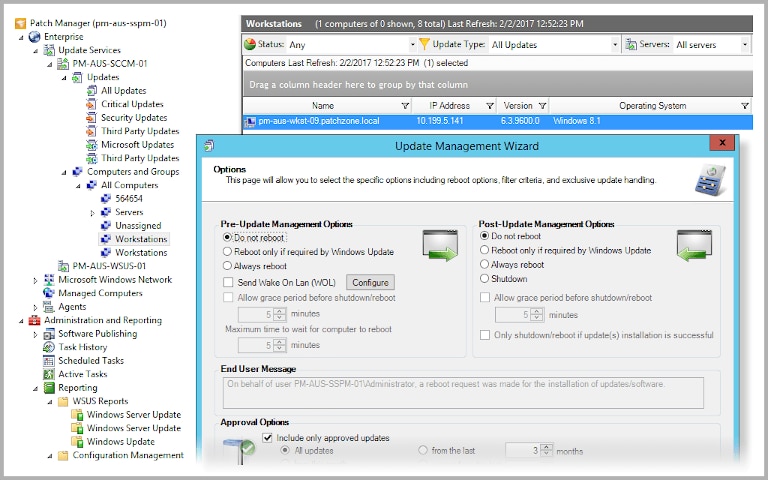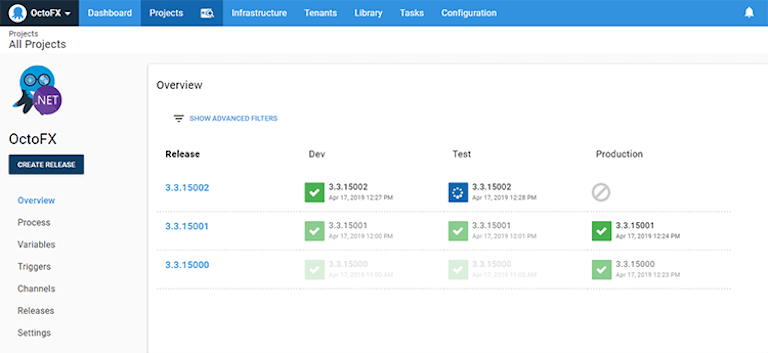Organizations use various applications and software to run their business, and software needs regular updates to improves its overall health, stability, and efficiency. Moreover, new features also play a crucial role to improve the end UX. While updating software comes with multiple benefits, manually updating desktop software on each system is tiring and time consuming. Software deployment tools help solve this problem. IT teams can avoid spending hours deploying updates and tracking rollouts. Choosing the right software deployment tool can help companies automate their processes, save time, and increase efficiency.
Software deployment tools install, manage, update, and configure software from a central server. These tools automate existing services and deployment tasks, monitor users and application activity, and improve security. Software deployment is a complicated process. Companies need to configure, test, and track how the software deployment tool is functioning. The chosen tool should be able to optimize the performance of the applications and integrate well with other applications or software.
Advantages of a Software Deployment Tool
Some of the advantages of a good software deployment tool are:
Automatic Deployment
Manually performing the task of software deployment is time-consuming and tedious. The automated software deployment tools are designed to eliminate the time IT teams spend on installing patches. These tools allow them to spend more time on other critical operational routines or development.
Enhanced Security
Protecting information from security breaches is pivotal. Security is always a top priority for IT teams when deploying software. Software deployment tools help manage sensitive user and group permission settings and allow only authorized users to access the information when required.
Timely Upgrades
Applications and software have to be updated regularly to improve their performance and eliminate vulnerabilities. But sometimes, due to oversights or other reasons, employees ignore updates, making their data vulnerable and exposing them to attackers. A well-implemented software deployment tool automates application updates, checks for vulnerabilities, and installs patches across the system.
Simplified Monitoring
Once your tool is up and running, it’s important to measure its performance. Monitor the areas in need of improvement and analyze employee interactions with the tool. If there are issues, you can optimize performance for better results.
Top Software Deployment Tools
Many software deployment tools offer highly specialized and innumerable functionalities. Companies must choose a tool compatible with multiple platforms and infrastructures. Rather than increasing overheads, the tool must streamline your workflow in your preferred environment. The tool should allow IT professionals to manage changes, track progress, carry out updates, and integrate with their projects.
1. SolarWinds Patch Manager

SolarWinds® Patch Manager allows admins to automate software deployment across thousands of Microsoft workstations, servers, and third-party applications. With the help of the dynamic automated scheduling feature, admins can control changes being made to applications and perform rollouts during continuous deployment. The tool allows admins to customize the configurations during software deployment across the entire network. You can also build custom software packages or use predefined software packages for deployment as per requirements. When installing updates, admins can specify the reboot preferences, push schedule, and other deployment rules to streamline the process.
SolarWinds Patch Manager also allows admins to track security updates and versions, and trace failed installations to avoid possible security breaches. In case of an error, preconfigured reports can help resolve issues. The fully customizable robust reporting in Patch Manager demonstrates compliance with IT standards to stakeholders and auditors. The current deployment status for workstations and servers can be tracked with simple charts and customizable lists. You can also view change notifications using the console or via emails. It allows you to automate software deployment with advanced scheduling and rebooting across workstations and servers. You can opt for a fully functional version of the tool available free for 30 days.
2. Octopus Deploy

Compatible with ASP.Net, Java, Node.js, and Windows services, Octopus Deploy allows IT teams to carry out deployments in the cloud, corporate data center, and on-site environment. The tool also allows automation of emergency and routine tasks across the system. The easy-to-use and intuitive dashboard of this tool helps IT teams automatically upgrade config files and allows them to track application status. The online customer training tutorials are an added advantage for employees who want to learn more about the tool.
3. Bamboo

Bamboo is a software deployment tool by Atlassian designed to automate the process of building, testing, and deploying patches into applications, allowing developers to focus on developing products. The tool allows IT teams to monitor deployment activity in detail and offers end-to-end visibility into release implementation across the network. The tool focuses on continuous delivery and continuous integration. Bamboo is compatible with most programming languages and can work with technologies like AWS CodeDeploy, Docker, and Amazon S3. The tool helps detect the bugs and flags errors as soon as they occur, so immediate action can be taken. For smaller teams, Bamboo can be installed for $10 for 10 jobs; for growing teams, the process varies depending on the number of selected remote agents.
Conclusion
Choosing the right software deployment tools can directly impact your team’s productivity. Selecting and using a tool isn’t a one-day process. You need to install, configure, and test before integrating it with other applications across your system. Whichever tool you choose, it should speed up your development cycle and streamline the process of deployment, so the IT team can concentrate on doing their jobs.
